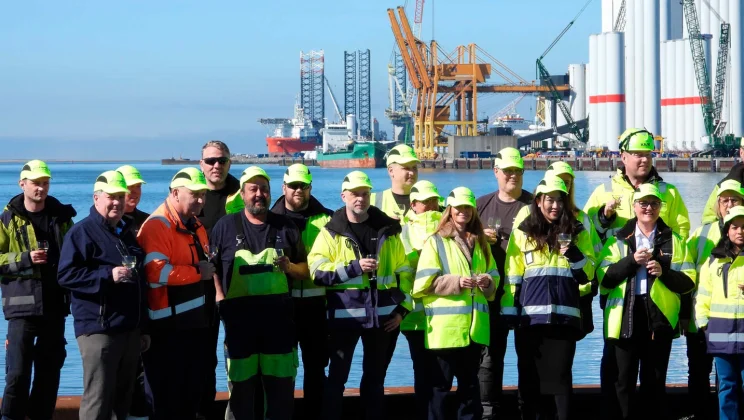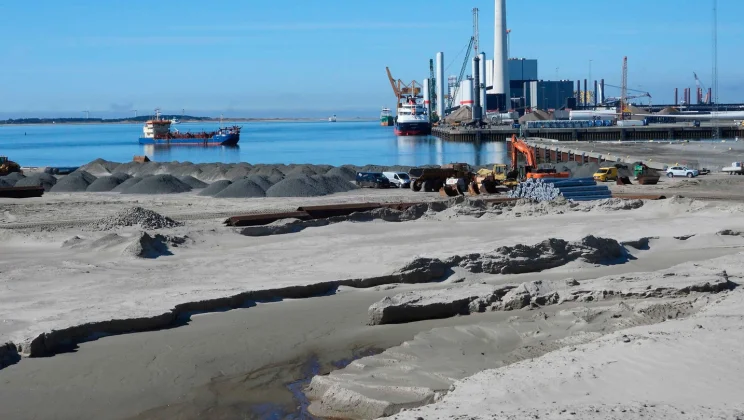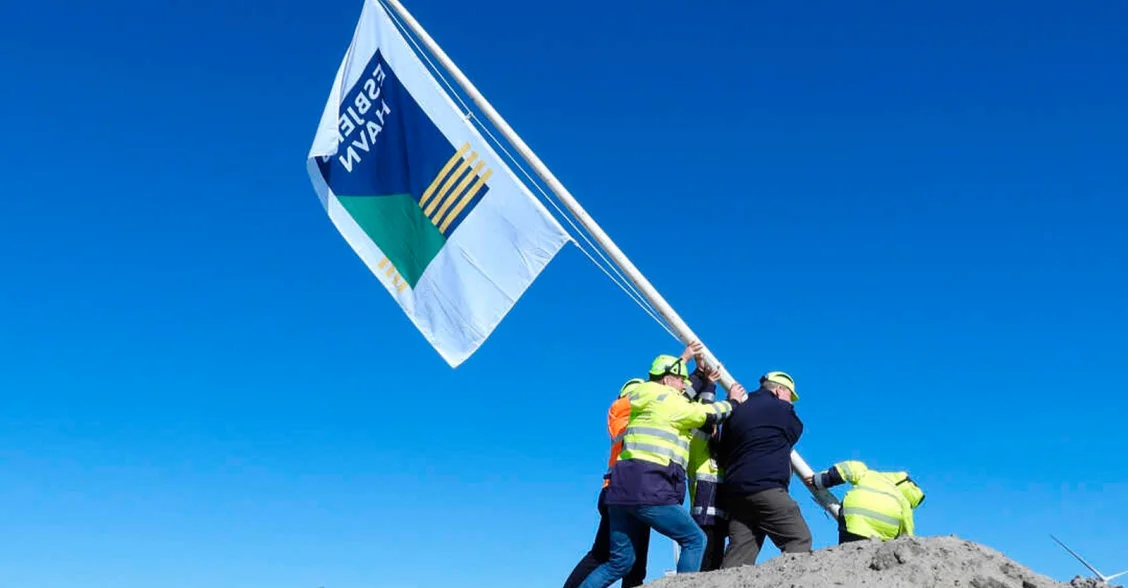Another stage in the expansion of Port Esbjerg has now been completed, providing an additional 570,000 square metres at the port and ensuring that even larger vessels can be accommodated in the future.
Now complete, the fifth stage of Port Esbjerg’s expansion saw more than four million cubic metres of sand and clay being suction-dredged, moved and recovered. This stage has added more than 570,000 square metres of space to the east of the port, moving the port boundary all the way to the Wadden Sea. The area is equivalent to 80 football pitches.
When one of Denmark’s largest ports expands its total area by more than 10 per cent, it is a significant milestone that once again cements the port’s position as a global hub.
“Port Esbjerg is of international importance. This expansion is crucial in our ongoing efforts to further support the green transition and provide the best possible conditions for the companies at the port,” says Dennis Jul Pedersen, CEO of Port Esbjerg.
Each of the following three factors drives the need for the expansion of the port: the shipping of offshore wind components, the establishment of Denmark’s first CO2 terminal and the handling of modular goods – all of which require more space at the port.
A huge boost to the green transition
Four-fifths of the European offshore wind capacity has been shipped from Port Esbjerg, corresponding to more than 27.5 GW. This is a remarkable achievement which emphasises the port’s role in realising Europe’s green ambitions.
However, the level of ambition will remain high. Over the next five years, 13.5 GW of offshore wind capacity will be installed, which will be shipped out from Port Esbjerg. This is the result of a large number of projects, mainly from Germany and the UK, which will be realised.
At the same time, the additional space provides the opportunity to establish Denmark’s first CO2 terminal as part of a Carbon Capture and Storage (CCS) facility. The recent decision on the terminal means that CO2 will be captured and stored underground in the North Sea. When the project is completed at the end of 2025, it will be Europe’s first full-scale CCS facility.

Several people from Port Esbjerg celebrating the port’s expansion with a glass of champagne.
Expansion required for the transport of cargo
The expansion means that the 570,000 square metres will be ready for leasing by the end of the year. This significant increase in space will ensure that the companies at the port will have more room for their operations and that the port can support the strategic objectives in modular cargo.
With routes to 27 different ports across Europe and more than 4.5 million tonnes of goods handled annually at the port, Port Esbjerg is not only Denmark’s largest RoRo port, but also a hub in the network to other European ports.

A small part of Port Esbjerg’s expansion, where sand and clay from the port’s navigation channel have been reused.
Expansion balanced with the need to respect the natural enironment
The massive volumes of sand and clay that were extracted, suction-dredged and moved have required many and varied measures to protect the marine environment. Throughout the process, Port Esbjerg has been very careful to ensure that the materials extracted from deepening the entrance were continuously sampled and analysed to ensure that none of the materials were polluted.
This approach helped to ensure that the dredged seabed materials were not disposed of at sea and that the expansion was undertaken in a responsible and sustainable manner.
“We’re very proud that our expansion was balanced with the need to respect the natural environment and performed in the most environmentally friendly way by utilising the dredged material in the best possible way,” Jul Pedersen concludes.
Go to overview

